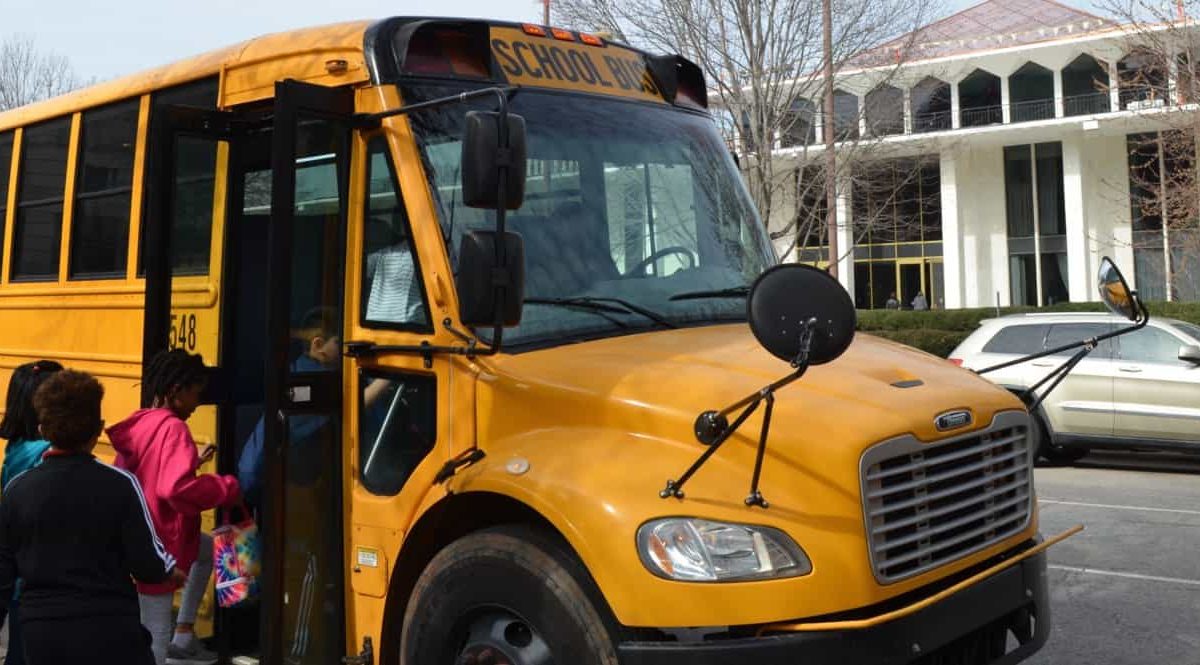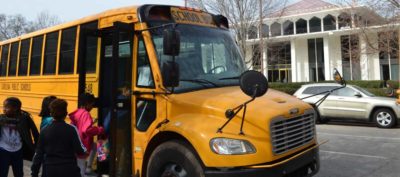
Readers of EducationNC understand that education in North Carolina…isn’t exactly a simple topic. Fights over teacher pay, classroom funding, and even high school athletics seem to dominate any conversations about education emanating from West Jones Street in Raleigh.
One education policy problem that seems to be flying under the radar from a legislative standpoint? The school bus driver shortage. Yes, the legislature did raise the bus driver minimum wage to $15/hour earlier this year, but the shortage throughout the state has not been alleviated.
So far, raising the minimum wage is about all the legislature has done to ease the stress on school districts and get them the bus drivers they desperately need. At the start of the 2022-23 school year, EducationNC reported that there are still around 1,300 school bus driver vacancies in North Carolina. For context, about 14,100 school buses run in the state each day. There are simply not enough drivers to transport students without major logistical headaches.
This problem should be treated with much more urgency by the legislature. Why? Because school bus transportation is one of the most important aspects of a child’s educational experience, especially for students in traditionally marginalized groups.
North Carolina does not collect data on the racial/socioeconomic demographics of bus riders. However, we do know that school bus transportation correlates to fewer instances of chronic absence. Michael Gottfried, an economist at the University of Pennsylvania’s Graduate School of Education, found that children taking the bus are three percentage points less likely to be chronically absent.
We also know that members of traditionally marginalized communities and lower socioeconomic classes have higher absence rates. Emma García and Elaine Weiss, researchers with the Economic Policy Institute, observed that the largest share of three-plus days absent students were classified as Hispanic and Native American/Other. They also found that, “free lunch-eligible students — the most economically disadvantaged students — were more than twice as likely to be absent from school for more than 10 days as nonpoor [sic] students.”
There isn’t data that shows direct correlation between a lack of school bus transportation and an effect on disadvantaged groups. However, school absenteeism is bad, traditionally marginalized communities are the most absent groups, and school bus transportation reduces absenteeism. Students need school bus drivers.
So, what actions can the legislature take to help solve the problem? It begins with the driver training process. A study commissioned by the legislature in 2017 found that only 56% of school districts pay their applicants’ $260 upfront costs. For some drivers, this is a massive barrier and stops their chances at becoming a bus driver before they take a single training class. Waiving application fees for every applicant should be a no-brainer; school bus driving is not a position that should be gatekept.
The same study found that the average time between a bus driver’s application to their first day driving is 54 days. Many drivers are not paid during this extensive time period and simply cannot afford to undergo the training process. With an extensive private employment market in the state, school districts are at a disadvantage if they do not provide payment for drivers-in-training. A model the state could follow is that of Onslow County. They give drivers a $2,500 signing bonus with half paid out upfront and half paid after 90 days on the job. Splitting the bonus gives drivers needed pay while also providing an incentive to remain on the job.
To alleviate the training backlog, the NC DMV and local school districts can partner to identify bus drivers that could be certified as trainers in addition to their current driving role. This is necessary because of the intense labor shortage the NC DMV is facing. For example, Henderson and Transylvania Counties (serving a combined 16, 217 students) have to share a single bus driver trainer. Drivers could train applicants in between their morning and afternoon shifts, giving them more hours and more benefits while helping reduce their profession’s labor shortage. This would take time to establish but is a feasible solution to the lack of bus trainers at the DMV.
From an outsider’s perspective, these three options seem like non-political, sensible solutions to the bus driver shortage. They give the legislature an opportunity to make the bus driving profession much more accessible to and populated with high-quality drivers.
Recommended reading



